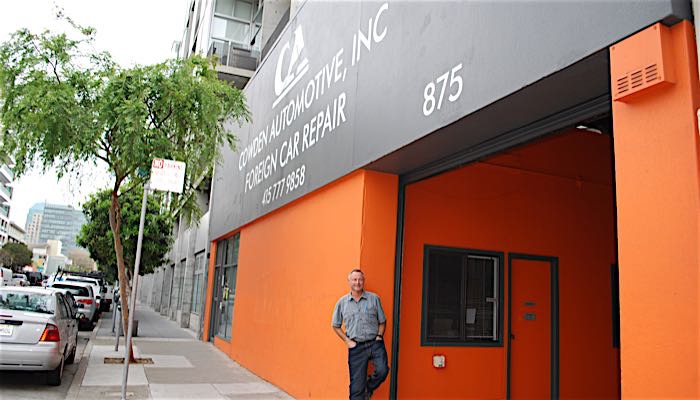By Josh Berstein
Even though we now live in a digital world, customer testimonials still play an important role in the decision process for consumers. In fact, due to the amount of research potential customers conduct online before visiting your automotive shop or store, it could be argued that customer testimonials are more important than ever.

A company that has a website with dynamic testimonials is much more likely to convert potential customers into paying ones and increase profits in the process.
Your potential customers are more concerned with what their friends and like-minded people have to say instead of experts and industry leaders.
In a 2010 study by The E-tailing Group, after surveying 1,000 consumers who shop at least four times per year, they found that:
• 71% stated that user-generated customer testimonials have the greatest impact on their decision making process
• People reading 8 or more customer testimonials before making a decision is up 77% from 2007
• 55% of people surveyed rely on friends as their number one decision-making factor when making purchases
• However, only 35% stated that they rely on retailers to make the same decisions
In another 2010 study by PowerReviews, after surveying 1,000 consumers who shop at least four times per year, they found that:
• 63% of shoppers consistently read reviews and testimonials before making a purchase decision
• 39% suggest that it is necessary to read 8 or more testimonials to gain sufficient confidence to judge the product
• Trust in companies is reduced without testimonials
Customer testimonials are playing an increasingly important role the purchasing process. If you don’t have customer testimonials yet, now is the time to ask your customers to provide you with some.
What Types of Customer Testimonials Are There and Which Are Best?
There are several types of customer testimonials and some work better than others.
Written Testimonials
laptopThe first and most common type of testimonial is a written one. This is when customers fill in a submission form on your website, respond to a survey or send you a letter.
Audio Testimonials
An audio testimonial is an audio recording of customers who talk about and endorse your products or services. During an audio testimonial, customers discuss the reasons why they enjoy your products or services and the benefits it has brought them. They can be conducted as an interview or by having the customer share their opinion.
Potential customers find audio testimonials to be more authentic than written testimonials because they are harder to produce and require more effort. A high-quality audio testimonial is a great way to help add credibility to your company and increase sales.
You can easily get audio testimonials by giving customers a toll-free number to call and record their comments.
Video Testimonials
The most dynamic and effective testimonials are video testimonials. Seeing is believing.
When prospects can see the faces of already-satisfied customers, it adds a level of personalization that is hard to recreate any other way. They are able to identify with them and understand how your products or services benefited them.
How Can I Get My Customers to Provide Testimonials?
It can sometimes be hard to entice customers to provide testimonials, but following these steps can simplify the process:
1) Create a Page Specifically For Testimonials
If you don’t have a specific place for your testimonials on your website, you are missing out on a big opportunity. By providing a dedicated page for customers to view and create testimonials, you can increase your submissions. Potential customers will also be able to find them more easily, increasing their effectiveness.
2) Reach Out to “Star Customers”
Your “star customers” provide the best opportunity for great testimonials. These “star customers” can include:
• Customers who make frequent purchases
• Customers referred by existing customers
• Customers who spend a certain amount of money ever year
• Or something specific to your business
By targeting your best customers for testimonials, they will be able to provide potential customers with dynamic reasons why they should spend money with you instead of your competition.
3) Ask for Testimonials Right After the Purchase
The best time to ask for testimonials is when everything is still fresh in the customer’s mind. If you wait a month, they might lose interest and then become unwilling. By asking for a testimonial within a week of the purchase, you are more likely to find the customer willing to participate. They will also be able to provide something more comprehensive.
An email sent within a week of the purchase asking for a testimonial with a link directly to your testimonials page is an easy way to make this happen.
4) Ask Them What Made Your Product or Service Different From the Competition
The main point of a testimonial is to make your company stand out from the competition. To best way to do this is by having your customers highlight the benefits they received from your company instead of others. This could be:
• A lower price
• A higher level of quality or service
• A specific expertise
• A comprehensive guarantee
• Or something specific to your company
If your testimonials don’t communicate the differences and benefits potential customers will receive from your company, they will be ineffective and accomplish nothing.
5) Have Customers Provide a Response Instead of Answering a Survey
Giving potential customers the results of 100 existing customers that gave your product a 5-star rating will not be as effective as giving them responses created by customers. Potential customers want to see what existing customers had to say in their own words. It is important to give your customers the ability to express themselves. This will provide the most honest and effective testimonials possible.
6) Collect Relevant Information to Make Their Testimonials Credible
Make sure you collect the name of the person providing the testimonial. Depending upon your company, you might also want to collect:
• The state they live in
• Their job title
• The product or service they purchased
• Other things that make sense for your company
Potential customers will find your testimonials more useful if they have an element of credibility to them. However, it is important to make sure to ask for permission from anyone submitting testimonials before using any information they provide.
7) Reward Customers for Good Testimonials
The easiest way to get testimonials from customers is to offer them something in return. You are asking your customers to take their time and give you something and you should reward them for doing so. A coupon offer for a future purchase is a great way to dramatically increase the number of testimonials you receive from customers.
Testimonials can help persuade potential customers to buy your products or services. They add a sense of credibility to your company and allow potential customers to see what others are saying about you.
They are becoming increasingly more important and many more people are relying on them as their primary factor for making purchasing decisions. If you take advantage of this opportunity, you can greatly increase your sales and have more satisfied and informed customers.
Josh Bernstein is a social media specialist at AfterMarketer Club. For more information on customer testimonials or how you obtain them for your company, visit their website at www.aftermarketerclub.com.

